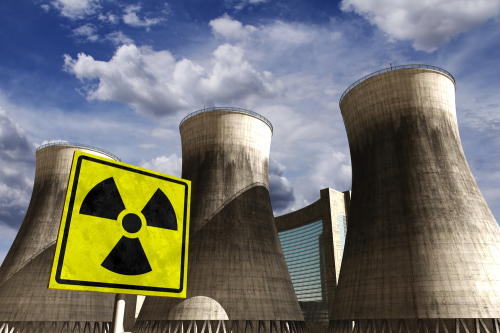


The generation of electrical power, on the large scale, covers both the production of electricity by centralised generating stations, for national distribution and use – and the similar generation of power locally to, and largely for, a single factory estate, or for the power stations set up to supply a captive system, such as a railway network.
The apparently similar distribution of natural gas as an energy vector is not covered in this article, as the preparation of gas, ready for combustion, is considered to be part of the energy materials extraction sector. In fact, as described in this article, the equipment sector does not include the extraction and preparation of any of the fuels used in the generation process, although the nature of the fuel material may strongly determine the characteristics of the power generation process.
Power generation largely involves the release of energy from a variety of fuel sources, and the use of this energy to produce electricity, employing rotating machinery, in the same manner as Michael Faraday first did in 1831. The fuel source is still predominantly one of the carbonaceous materials extracted from the earth (coal, oil or natural gas), which is then converted to heat by combustion – the world’s 2012 consumption figures were 29.9% coal, 33.1% oil and 23.9% gas, leaving only 13% for nuclear power, and hydroelectricity and all the other renewable sources.
The actual conversion from carbonaceous fuel source to generating fluid is mostly a dry process, which does not have much use for filtration or sedimentation. However, there are some important uses for separating equipment in the processes peripheral to power generation (such as boiler feed water treatment, or gas turbine air intake cleaning), sufficient to make a significant part of the filtration market, estimated to be around $3 billion for central station generation alone.
Natural force
The basic stages in the traditional process for the generation of electricity are the rotation of the core of the generator set, preceded by the provision of energy by which to turn it. In the case of wind or water power, that energy comes directly from the appropriate turbine driven by the natural force (wind or water). In the much more common fossil fuel powered systems, the energy is released by the burning of the fuel, to produce a hot gas, which either drives a gas turbine as the power source, or generates steam, for use in a steam turbine.
The single turbine system is not all that efficient, being limited by the thermodynamics of the working heat engine (to around 35% or 40%). Higher efficiencies (up to 60%) come from combined cycle systems, which use gas first of all in a gas turbine, the hot exhaust from which is passed to a water boiler, producing steam to generate more electricity in a steam turbine.
Nuclear power systems do not have the equivalent of a combustion process and so have no impact on the global warming situation, but otherwise work in much the same way, utilising the energy released by the fission reactions, either directly or to heat an intermediate fluid circuit that in turn boils water for a steam turbine generator combination.
The power generation sector is characterised by having to deal with some of the major problem areas of the filtration business – high purity water production and the removal of dust from very hot exhaust gases being two examples. As a result it is a very important component of solid/gas separation technology.
Power generation processes
The power generation processes in use today each involve a relatively small number of steps, employing just five basic technologies. These technologies are:the conversion of a naturally occurring fuel material into a flow of hot gas by combustion in air, or oxygen enriched air (coal, natural gas, oil, biomass or carbonaceous wastes);
-
the production of a similar flow of hot gas by the concentration of natural radioactivity into high temperature nuclear fission heat flows (nuclear power);
-
the capture of a naturally occurring or artificially created flow of water into a channel, so as to enable the conversion of this water flow to energy (hydroelectricity, tidal and wave power);
-
the use of arrays of giant turbines strategically placed in zones of high wind velocities (wind power); and
- the conversion of solar energy, either directly (photovoltaically) or by use of an ion stream (thermionically).
(A sixth process, chemical in basic technology, using batteries or fuel cells, could be included in this list as a power source, but is not yet used for central station power generation, because the unit plant sizes are too small. It is, however, now in use as a power source in vehicle engines.)
At the present time, by far the most important of these technologies, as far as power generation is concerned, is the production of hot gases by fossil fuel combustion, for use either directly in a gas turbine or after conversion to high-pressure steam for use in a steam turbine (making up 88% of the total fuel sources used in power generation). Unfortunately, it is also a huge contributor to the carbon content of the atmosphere, and therefore to the phenomenon of global warming – hence the interest in the other four power generation technologies in the above list.
These other technologies do, of course, have their own disadvantages:
- nuclear fuel, although theoretically unlimited in hot gas temperature at the point of generation, and with large reserves of fuel (especially if thorium is used, or if a fast breeder reactor can be accepted), carries the problem of radioactive waste disposal, as yet unsolved, and therefore very unpopular – as well as being very expensive;
- water power, although still with fresh hydroelectric sites to explore, and with the huge reserves represented by the sea, cannot offer large base-load facilities;
- wind power is limited by the vagaries of the consistency of wind speed (and can be very unpopular); and
- direct solar radiation is only suitable for guaranteed clear skies (and is still expensive and limited in unit capacity).
These comments imply much argument in the choice of national energy policies, but the dominance of the fossil fuel combustion processes, which is where the use of filtration is to be found, means that separation equipment should continue to sell well in this sector.
Equipment uses
The application of filters in this sector is obviously dictated by the nature of the fluid/solid system to be treated. There is a range of duties for each fluid, including:
water filtration
- cooling water
- boiler feed water
- BFW condensate
- diesel engine coolant
air filtration
- gas turbine intake
- diesel engine intake
- boiler furnace exhaust
- engine exhausts
oil fitration
- fuel cleaning
- engine lubricant cleaning
- transformer oil processing
Nuclear power has many of these fossil fuel applications, but now characterised by the particular requirements of safety and achieving long life in a highly radioactive environment.
Several of the individual applications in this list are quite straight forward, but equally some are unusual. The most important one to note is probably the gaseous exhausts, from boiler furnaces, or from diesel engines (on power generation standby duties), releasing microscopic particles of soot, which can be a danger to human health. Large scale coal and oil combustion exhausts are equally hot and bear suspended solid particles – of PFA (pulverised fuel ash) in the case of coal. These exhausts also contain sulphur, for the removal of which there are several proprietary processes available. For these hot gases, filters have been developed, made of sintered metal or ceramic fibre. Dedusting is obviously a task for a filter, but sulphur removal is mainly undertaken by wet scrubbing with a lime slurry, yielding a liquid waste of calcium sulphate and other materials – a separation task to which centrifuges are well-suited.
Aggressive conditions
Because of the aggressive conditions inside and around a boiler furnace, the boiler feedwater needs special treatment to purify it, and needs also to be cleaned free from the fine scale particles which flake off the boiler tubes and shell. This requires very fine filtration of the incoming makeup water, probably with some membrane processing and de-ionisation. Membranes may also be used to scavenge the water free from acidic gases. The feed water once prepared and ready for generation is quite an expensive liquid, and so will be condensed after use, and some filtration will again be necessary to remove particles picked up in the steam system.
The low pressure steam needs an elaborate cooling system to condense it, and the cooling water used in the steam condensation stage, and its blowdown flows, must also be cleaned – of scale particles, to stop deposition on heat exchange surfaces, and especially of Legionella bacteria, which breed far too well in the warm cooling waters, posing quite serious health threats.
The gas turbine, either on its own or as part of a combined cycle system, is rapidly becoming the energy generator of choice. It needs large quantities of ambient air for its combustion, and this air usually contains too much dust to allow it to be used in direct contact with gas turbine blades, so large filter installations are mounted at the air intake point, equipped with panel filters of some sort, or, increasingly, with arrays of V-bank (mini-pleat), plus prefilters, to remove the dust to a level that will not damage the turbine blades. These filter arrays are large, and with the increasing use of natural gas as energy source (especially if shale gas takes off) they will be more numerous, giving an excellent market for the mini-pleat style of filter.
Likely developments
Although this article has taken care to deal only with power generation, and to ignore the extraction and processing of energy materials, it must be recognised that these two sectors are very closely linked, such that a change in one is often followed by a related move in the other. Nowhere is that more true than in describing expected developments, where any marked change in fuel material has an immediate impact on the power generation equipment using it.
Likely changes in fossil fuel energy sources include a rapid acceleration in the use of natural gas, partly because it is the cleanest of them, and partly because of the vast reserves of shale gas now becoming apparent. This growth will produce a matching demand in the power generation plants, for gas turbine air intake filters, of the V-block, mini-pleat type, for example. Shale gas is actually quite dirty, so needs thorough cleaning, because of the subterranean shale fracturing process that produces it. (This favourable view of the future for shale gas assumes that its present poor public image can be improved.).
The other fossil fuel with expansion potential is coal, but here also there are image problems, despite the large reserves of coal (with proven reserves equivalent to a lifetime of nearly 110 years – more than twice that of oil and nearly twice that of natural gas). Coal carries much of the blame for global warming, but its consumption is growing rapidly, and if that continues it will consolidate the filter market, especially for hot gas filtration and flue gas desulphurisation. Coal systems also include conversion to liquid fuels and gasification, both of which processes have strong needs for filters: fluid fuels will probably always have a strong position in mobile engine firing.
Also beset with image problems is nuclear power, which decreased in global consumption in 2012, unlike the other major energy sources. If there is a return to enthusiasm for nuclear power, which currently seems unlikely given the present antipathy towards it, especially following the recent tsunami in Japan and the related nuclear power disaster at Fukushima, then this would make great sense given the good global warming properties that it has. With a return to growth of nuclear power would come the reduction in carbon emissions and the consequent increased demand for high specification filters with long lives and low maintenance needs.
The biggest power generation system problem is the need for carbon capture and disposal, which, if it could be realised cheaply and with long term re-emission prevention, would go a long way to reversing the present rise in global warming. An ideal system would have carbon dioxide capture at the power station, where it is most concentrated (and where it would be an attractive filter market), and an economic gas separation process for carbon dioxide from the open air (giving a gas separation membrane market).
Other developments in the power generation system that would have a significant impact on the filtration industry could include:
- improved treatment of the boiler feed water system, including better cooling water and boiler blow-down processing, and acid gas (carbon dioxide and oxygen) removal with gas separation membranes;
- cooling water sludge processing and recycling of what is actually a quite costly asset;improved high temperature filters, probably featuring flexible ceramic fibre candles.It is not expected that additional investment in renewable energy sources will affect the future for the filtration industry. They are but a small part of the overall energy picture, and their processing and use will offer only a negligible market for filters (except, perhaps, for biomass processing).
A major policy question affecting the sector as a whole is the need to choose between use of the materials as energy source, for which purpose they are obviously very well suited, apart from the problem of carbon emissions, or as feedstocks for a very wide range of chemicals, for which they are almost uniquely suited. Although some moves seem very necessary to ensure protection of chemical feedstock resources, it is unlikely that this will have any significant impact on fossil fuel usage in the foreseeable future.Added together, these factors mostly project an attractive future for filtration and other separation equipment in the power generation sector, without having to call upon the various renewable energy sources – which do not use filters to a large extent. •
Ken Sutherland
Tel: +44 (0)1737 218868
E-mail: ken.suth1@btinternet.com
Ken Sutherland has managed Northdoe, his process engineering and marketing consultancy, for over 35 years. During most of that time he has been concerned with the marketing and technology of filtration and related processes. He has written numerous articles for Filtration+Separation, and its sister publication Filtration Industry Analyst. He has also produced four books on filtration processes for Elsevier, including an A to Z of Filtration.





